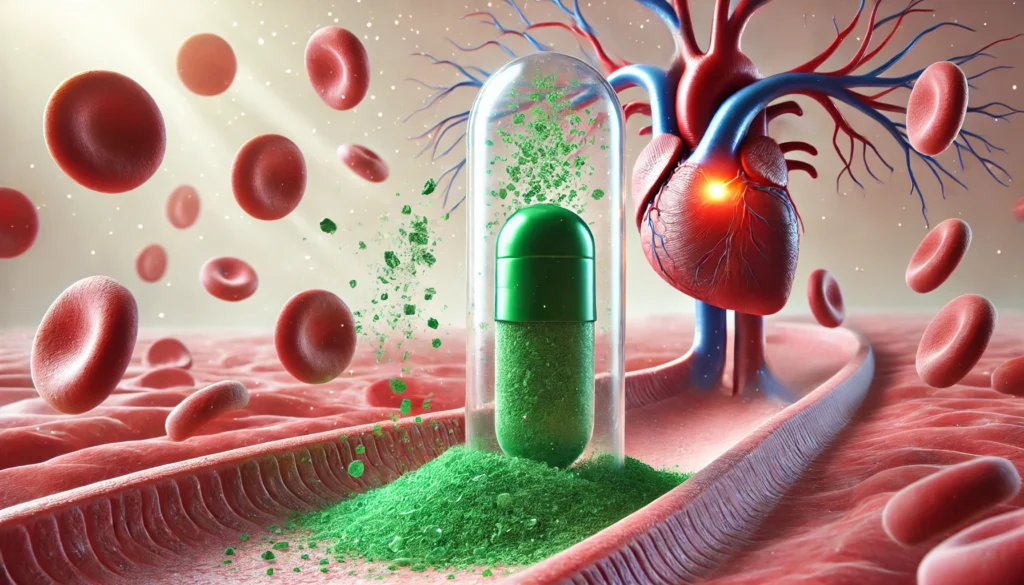Ginkgo biloba, one of the oldest living tree species on Earth, has found new relevance in modern health circles as a natural supplement purported to enhance memory, boost cognitive function, and support circulation. But as interest grows in its potential benefits, so too does the need for a deeper understanding of how this ancient botanical interacts with the body over time. Specifically, many users—and clinicians alike—seek clarity on an important pharmacokinetic property: how long does ginkgo biloba stay in your system? In exploring the concept of ginkgo biloba half life, we begin to uncover essential insights about its duration of action, ideal dosing intervals, and potential interactions that could impact safety and efficacy.
You may also like: Ginkgo Biloba Benefits for Creative Thinking: How This Ancient Herb Supports Cognitive Clarity and Focus
Understanding the ginkgo half life is not just a matter of academic interest. For health-conscious consumers looking to harness the benefits of ginkgo while minimizing potential risks, this knowledge can guide more effective, individualized supplement use. This article delves into the pharmacokinetics of ginkgo biloba, highlighting what current science tells us about how long ginkgo remains active in the system, what factors influence its metabolism, and how to time your dosage for optimal cognitive and circulatory benefits. Along the way, we’ll also address how different forms of ginkgo extract may vary in their half life, and what this means for practical, real-world use.
Defining Half Life in the Context of Herbal Supplements
The term “half life” is a pharmacological concept referring to the time required for the concentration of a substance in the bloodstream to reduce by half. While this is a well-defined concept in pharmaceutical science, its application to herbal supplements like ginkgo biloba introduces a layer of complexity. Unlike synthetic drugs, which typically consist of a single active compound, herbal extracts are multi-component mixtures. Ginkgo biloba, for example, contains flavonoids, terpene lactones (such as ginkgolides and bilobalide), and organic acids, each with its own absorption, distribution, metabolism, and elimination profile.
This complexity means that the ginkgo biloba half life cannot be pinpointed as a single number. Instead, we must examine the pharmacokinetics of its key active constituents. Studies have shown that terpene lactones, particularly ginkgolide B and bilobalide, tend to have half lives ranging from approximately 2 to 10 hours depending on the individual and the form of the supplement used. This range underscores the importance of considering both the chemical diversity within the ginkgo extract and the variability in individual metabolism when assessing how long ginkgo biloba stays in your system.
Moreover, the notion of half life in herbal medicine must account for the role of the gut microbiome, hepatic enzyme activity, and renal function—all of which can differ significantly among individuals. The variability introduced by these physiological factors adds further nuance to our understanding of ginkgo biloba pharmacokinetics and serves as a reminder that standardized extracts and consistent dosing play an essential role in optimizing therapeutic outcomes.

Key Constituents of Ginkgo Biloba and Their Pharmacokinetics
To understand how long ginkgo biloba remains in the body, it’s essential to dissect the pharmacokinetic behavior of its primary active constituents. These include flavonoids, which function as potent antioxidants, and terpene lactones, notably ginkgolides A, B, C, and bilobalide, which have been linked to neuroprotective and vasodilatory effects.
Terpene lactones are particularly important when discussing the ginkgo biloba half life, as they are believed to contribute significantly to the cognitive-enhancing and circulatory benefits associated with the supplement. Among these, ginkgolide B is one of the most extensively studied. Research shows that it typically reaches peak plasma concentrations within one to two hours of oral administration, with an elimination half life that can vary between 3 and 10 hours depending on individual metabolic factors and the delivery mechanism of the extract.
Bilobalide, another terpene lactone, follows a similar pharmacokinetic profile but may have slightly different absorption and elimination dynamics. These differences, though subtle, can affect the duration of action and potential interactions with other medications. Flavonoids, while less studied from a pharmacokinetic standpoint, are believed to have shorter systemic retention due to their rapid metabolism and elimination.
It is worth noting that commercial ginkgo biloba extracts—particularly standardized ones like EGb 761—are designed to contain consistent concentrations of these active components. Standardization not only supports reproducibility of therapeutic effects but also helps in predicting and studying the ginkgo half life across different populations. However, variability in manufacturing practices among supplements still poses a challenge for consumers seeking predictable outcomes.

Frequently Asked Questions: Ginkgo Biloba Half Life and System Duration
1. Can the ginkgo biloba half life vary depending on how it’s consumed?
Yes, the ginkgo biloba half life can differ based on the form in which the supplement is taken. Liquid extracts, for example, are often absorbed more quickly and may clear the system faster compared to extended-release capsules, which are designed for slower absorption. Chewable tablets and teas may also yield a shorter ginkgo half life due to reduced bioavailability. Additionally, some formulations combine ginkgo with other ingredients that could affect how long ginkgo biloba stays in your system. For those seeking consistent effects, choosing standardized extracts may help minimize variability in the half life.
2. How does intermittent use affect the ginkgo biloba half life and its presence in the body?
Intermittent use can create fluctuating levels of ginkgo’s active constituents in the bloodstream, which may extend or shorten the effective presence of the supplement. If ginkgo is taken sporadically, the body doesn’t build a stable baseline of the compound, and the ginkgo half life becomes less predictable. On the other hand, chronic use may lead to a modest accumulation, especially if the body’s elimination pathways become saturated or less efficient over time. This accumulation doesn’t mean toxicity, but it can slightly prolong how long ginkgo biloba stays in your system. For those alternating use with breaks, it’s essential to re-establish optimal dosing timing based on symptom recurrence and personal response.
3. Does the ginkgo biloba half life impact how long its cognitive benefits last?
Interestingly, the duration of cognitive enhancement does not always mirror the pharmacological half life. While the ginkgo biloba half life might last only several hours, users often report cognitive clarity that persists well beyond the detectable presence of ginkgolides in the blood. This may be due to downstream effects such as improved blood flow, neuroprotection, or mitochondrial efficiency that outlast the initial pharmacokinetic phase. These benefits may gradually diminish as the compound is cleared, but they don’t always follow a direct correlation with the ginkgo half life itself. This lag between half life and perceived effect makes it important to assess not just plasma levels but subjective performance when timing doses.
4. Could gender or hormonal status influence the ginkgo biloba half life?
Emerging evidence suggests that hormonal fluctuations may play a role in modifying the ginkgo biloba half life. For example, estrogen is known to influence liver enzyme activity, which could either hasten or delay the metabolism of ginkgo constituents depending on the individual. Women who are pregnant, breastfeeding, or on hormone replacement therapy might experience altered clearance rates, although robust studies in these populations remain limited. Men with higher levels of testosterone may also metabolize certain components more quickly, affecting how long ginkgo biloba stays in your system. As a result, both sex and hormonal status are worth considering when evaluating supplement timing and effects.
5. How does long-term ginkgo use influence the body’s metabolism of it?
With prolonged use, the body can adapt to the presence of herbal supplements in subtle ways. While the ginkgo biloba half life itself may not change dramatically, the efficiency of absorption, receptor sensitivity, and metabolic clearance can evolve. For example, enzymes like CYP2C19 and CYP3A4 may upregulate in response to regular ginkgo exposure, potentially shortening the ginkgo half life over time. This phenomenon, often seen with pharmaceuticals, is less studied in botanicals but remains plausible. Users might find that doses need slight adjustment after several months to maintain the same level of effect without inadvertently over-saturating their system.
6. Does body composition affect how long ginkgo biloba stays in your system?
Yes, body composition can significantly influence the distribution and elimination of ginkgo constituents. Individuals with higher fat content may retain lipid-soluble compounds longer, subtly extending the ginkgo biloba half life. Conversely, those with a leaner build and faster metabolism may clear the supplement more rapidly. Additionally, hydration levels and muscle mass can affect the volume of distribution and renal clearance. These physiological differences mean that the ginkgo half life is not fixed across users, highlighting the need for personalized dosing strategies.
7. Can combining ginkgo with other nootropics extend its duration of action?
Stacking ginkgo with other nootropics may not change its pharmacokinetic half life, but it can prolong or amplify the perceived benefits. For example, pairing ginkgo with phosphatidylserine or bacopa monnieri may enhance memory consolidation and synaptic plasticity beyond what ginkgo alone can achieve. Although this doesn’t increase the ginkgo biloba half life in a strict sense, it does extend the cognitive window in which users feel mentally sharp. However, combining nootropics requires caution to avoid overlapping effects or unexpected interactions. Consulting a healthcare professional before stacking is advisable, especially when aiming for sustained cognitive support throughout the day.
8. How might age-related changes in organ function affect the ginkgo biloba half life?
As individuals age, both liver and kidney function tend to decline, which can have a noticeable effect on the ginkgo biloba half life. Slower hepatic metabolism and reduced glomerular filtration may delay the elimination of ginkgo’s active ingredients. This could result in a longer duration of action or, in some cases, unintended buildup in the bloodstream if dosing isn’t adjusted accordingly. For older adults, particularly those on multiple medications, monitoring how long ginkgo biloba stays in your system becomes increasingly important. Tailoring dose frequency to match organ function can help prevent interactions while preserving the supplement’s cognitive and circulatory benefits.
9. What role does circadian rhythm play in ginkgo metabolism?
Though rarely discussed, circadian rhythm may subtly influence the ginkgo biloba half life. Enzyme activity, hormone release, and digestive efficiency vary across the day and can affect the absorption and clearance of herbal supplements. For instance, taking ginkgo in the morning may align better with peak metabolic function, potentially shortening its half life compared to evening dosing. Additionally, cortisol and melatonin levels can shift how the body processes certain compounds, possibly influencing how long ginkgo biloba stays in your system. Aligning supplement timing with biological rhythms may enhance efficacy and minimize the risk of interference with sleep or other physiological processes.
10. Could genetics influence the ginkgo biloba half life in certain individuals?
Absolutely—genetic polymorphisms in metabolic enzymes, especially within the cytochrome P450 family, can significantly alter the ginkgo biloba half life. Variants in CYP2C19 or CYP3A4 may speed up or slow down how quickly ginkgo is metabolized, leading to notable differences in how long ginkgo biloba stays in your system. This genetic variability can explain why two individuals taking the same dose may experience different onset times, durations, or intensities of effect. Pharmacogenomics, though more commonly applied to pharmaceuticals, is becoming increasingly relevant in the supplement space. Personalized genomics services may soon offer insights into optimal ginkgo dosing based on individual metabolic profiles.

Factors That Influence How Long Ginkgo Biloba Stays in Your System
Several physiological and environmental factors can influence the duration ginkgo biloba remains in the body. Chief among these are individual differences in metabolic rate, liver enzyme activity (particularly cytochrome P450 enzymes), age, renal function, and gut microbiota composition. Each of these factors can affect how quickly the active compounds of ginkgo are broken down and eliminated from the system.
For instance, individuals with slower metabolic rates or compromised liver function may retain ginkgo constituents in their bloodstream for longer periods, effectively extending the ginkgo biloba half life. Conversely, younger adults with robust enzymatic activity may metabolize and clear the supplement more rapidly. Similarly, those with impaired kidney function may experience prolonged elimination times for water-soluble flavonoids and terpene metabolites.
Diet and concurrent supplement or drug use can also impact the pharmacokinetics of ginkgo biloba. For example, taking ginkgo alongside high-fat meals may delay absorption, while co-administration with medications that inhibit liver enzymes can slow down the breakdown of ginkgolides and bilobalide. Alcohol consumption and smoking, both of which influence hepatic enzyme activity, can likewise modify how long ginkgo biloba stays in your system.
Another variable often overlooked is the role of the gut microbiome in modulating the bioavailability and metabolism of herbal compounds. Emerging research suggests that microbial activity in the digestive tract can alter the structure and function of ginkgo constituents, influencing their absorption and systemic residence time. This further underscores the personalized nature of herbal pharmacokinetics and the importance of individualized dosing strategies.
Further Reading:
Pharmacokinetics and bioavailability of a Ginkgo biloba extract
Ginkgo biloba: A Treasure of Functional Phytochemicals with Multimedicinal Applications
herbal supplement metabolism, natural nootropics guide, botanical supplement duration, ginkgo biloba absorption rate, terpene lactones effects, flavonoid pharmacokinetics, how long supplements last, cognitive enhancer timing, plant-based brain boosters, natural focus aids, EGb 761 supplement, ginkgo biloba interactions, safe herbal supplement use, half life of herbal extracts, optimizing nootropic schedules, brain circulation support, natural supplement stacking, personalized supplement timing, herbal pharmacokinetics explained, metabolism of plant compounds
.Important Note: The information contained in this article is for general informational purposes only, and should not be construed as health or medical advice, nor is it intended to diagnose, prevent, treat, or cure any disease or health condition. Before embarking on any diet, fitness regimen, or program of nutritional supplementation, it is advisable to consult your healthcare professional in order to determine its safety and probable efficacy in terms of your individual state of health.
Regarding Nutritional Supplements Or Other Non-Prescription Health Products: If any nutritional supplements or other non-prescription health products are mentioned in the foregoing article, any claims or statements made about them have not been evaluated by the U.S. Food and Drug Administration, and such nutritional supplements or other health products are not intended to diagnose, treat, cure, or prevent any disease.


